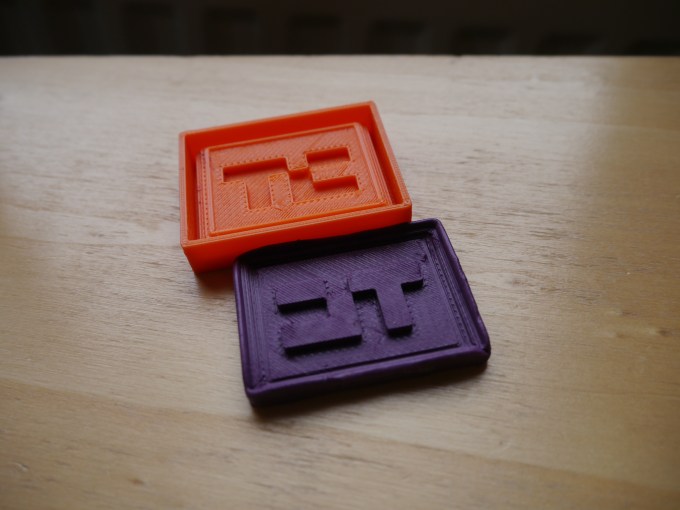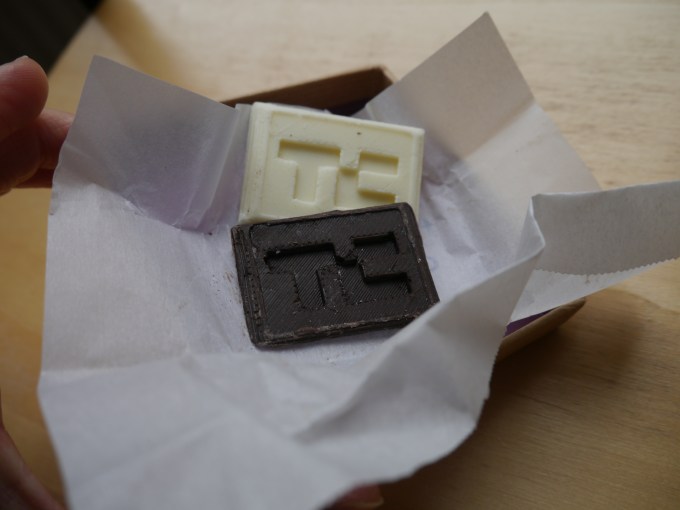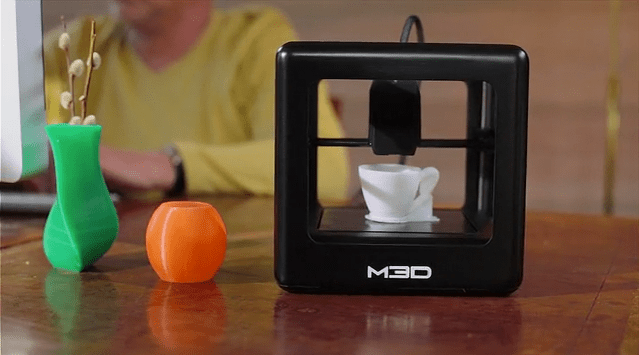High end 3D printers out in the wild already can print some pretty incredible things but at a high cost and commensurate level of complexity. As with any nascent industry, the market’s initial focus was specialists and professionals rather than the mainstream. But that focus is shifting and more consumer-focused 3D printers are starting to push in.
The Micro, launching a Kickstarter crowdfunding campaign today to raise $50,000, is aiming squaring at the consumer end of the market, with a low cost device that’s undoubtedly pretty basic but which is therefore aiming to be simple and straightforward to use. Update: Well that was quick. The Micro has blown past its funding goal — and did so in just 11 minutes, according to this tweet. At the time of writing it’s north of $162,000 and counting.
The Micro 3D printer has a print layer resolution of between 50 and 350 microns, and a print area of 4.6 x 4.2 x 4.4″. Its on-desk footprint is just 7.3 in³.
This box is not going to be able to print anything big or especially beautiful but it looks set to be able to churn out brightly coloured plastic trinkets at relatively low cost — with an early bird Kickstarter price of just $199 for the printer (rising to $249 and $299 after the cheaper pledge levels are gone).
That’s considerably cheaper than some other consumer-focused 3D printers. For example, MakerBot’s compact 3D printer, the Replicator Mini, which has a maximum build volume of 3.9 × 3.9 × 4.9″ and a print layer resolution of 200 microns, costs orders of magnitude more, at circa $1,375.
Other more affordable alternatives include the Pirate3D Buccaneer printer, which prints at 100-micron resolution and has a print area of 5.8 x 3.9 x 4.7″, and currently costs circa $500 on pre-order; and the 100-micron resolution MakiBox (print area 4.3 x 5.9 x 3.5″), which costs circa $300.
There’s also the Zim, which hasn’t yet made it to market, offering up to 80-micron print layer resolution and a print area of 5.9”x5.9”x5.9 — but with a retail price expected to be a little higher, circa $899.
The Micro’s consumer-friendly credentials include having a plug and play ethos, with the device shipped ready assembled, and with auto-leveling and auto-calibration built in to the printer head so it can keep on printing without requiring user intervention.
Filament spools can also fit inside the box to keep it looking clean and improve portability. The printer can take PLA or ABS, as well as the maker’s own filament spools — or standard 1.75 mm filament spools available on the market.
The companion software for selecting and tweaking 3D models to print is being designed for touchscreen use and to support drag and drop interactions.
It’s also apparently very quiet during operation, and its makers claim it has the lowest power consumption of any 3D printer on the market.
There’s no doubt its lower cost means corners get cut on print quality. But that’s the trade-off the Micro’s U.S.-based makers reckon the mainstream will be happy to make to have a device in their home that can print bits and bobs for fun or small household/family projects without costing a fortune.
Below is an example of the print quality of the Micro — the orange plastic print was the master used to cast the purple rubber mould, and that in turn was used to create the custom TC chocolates:


Backers paying the cheapest price for the Micro have the longest to wait to get their hands on the device — with an estimated ship date of February 2015.
